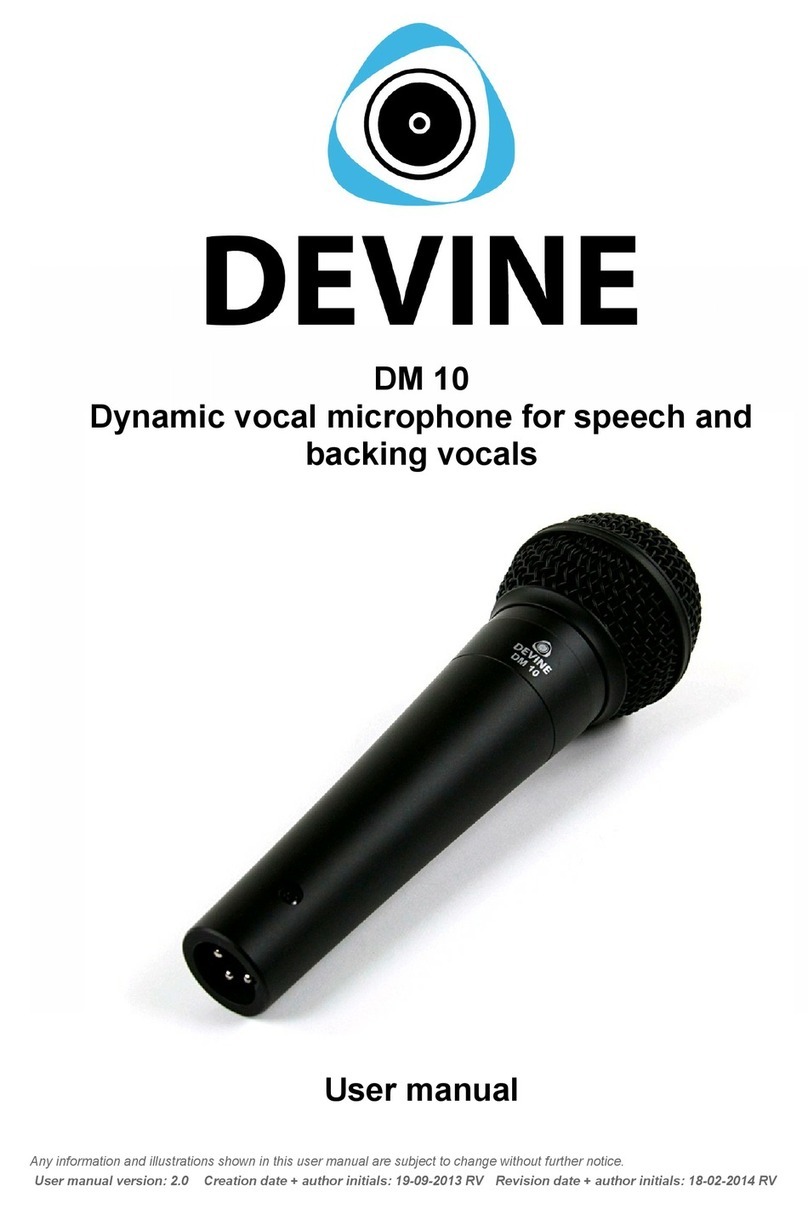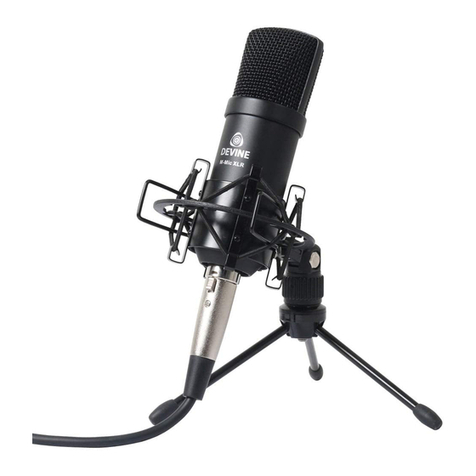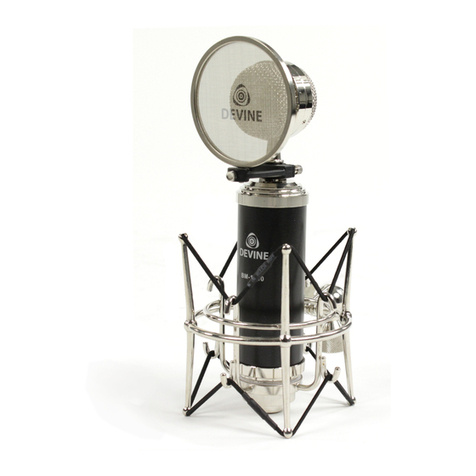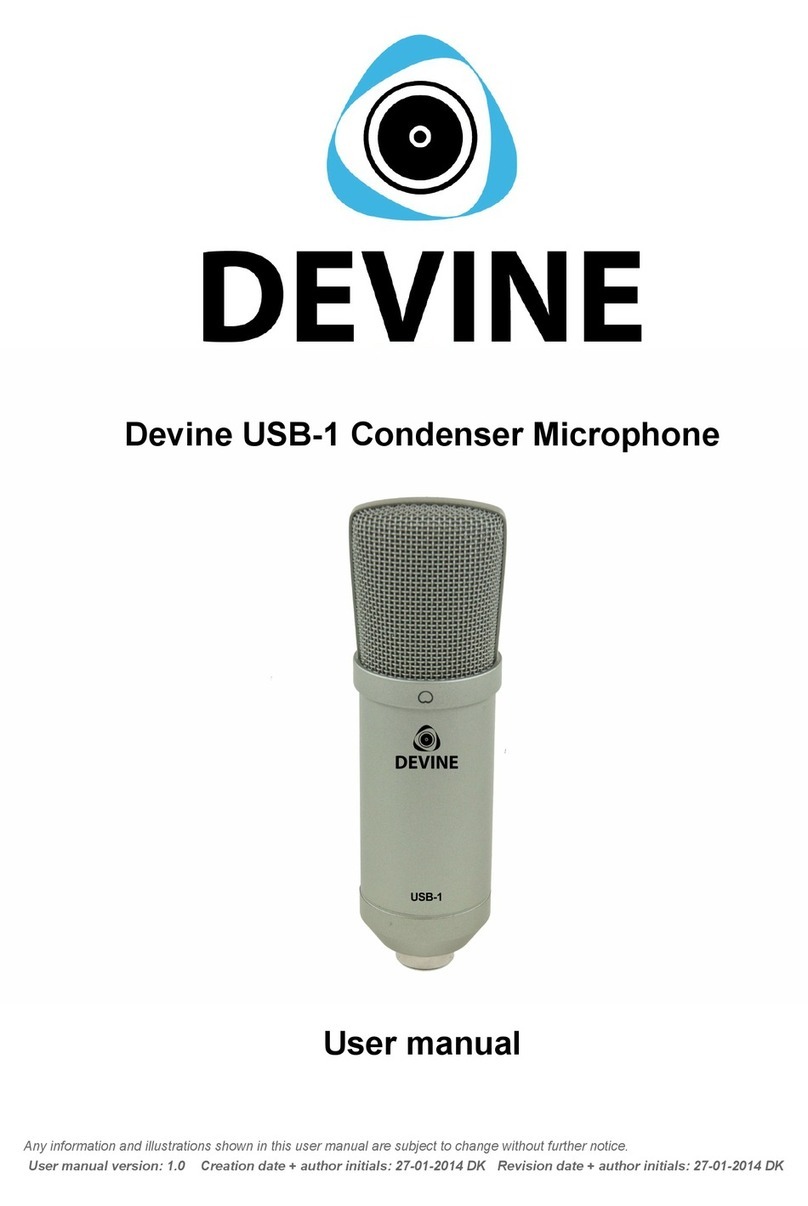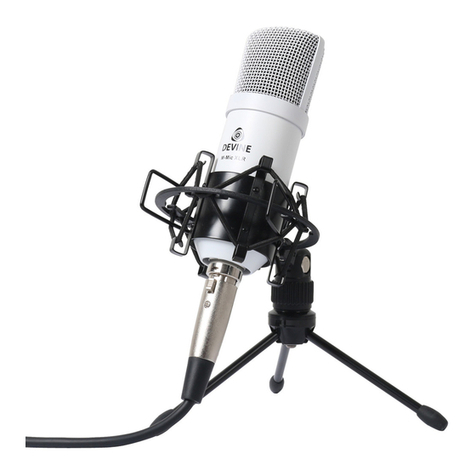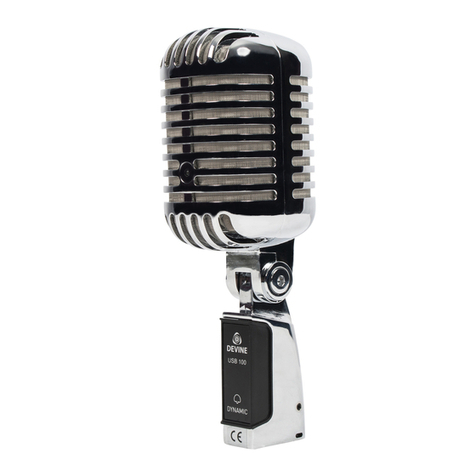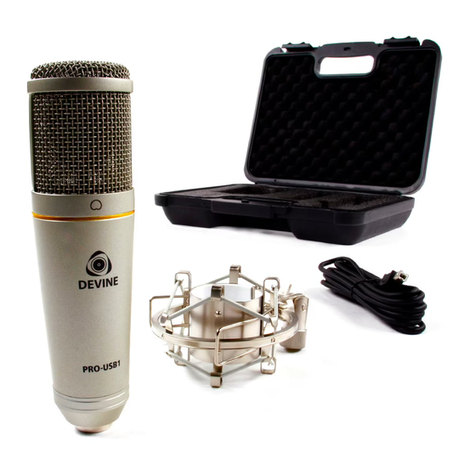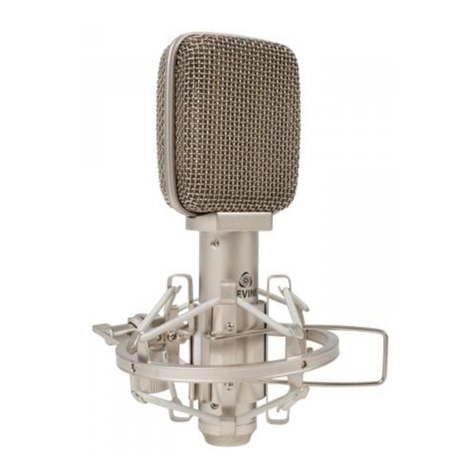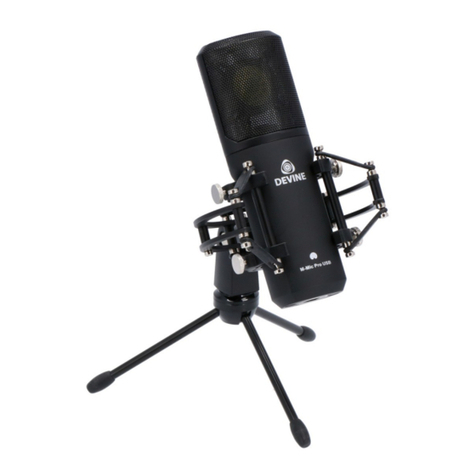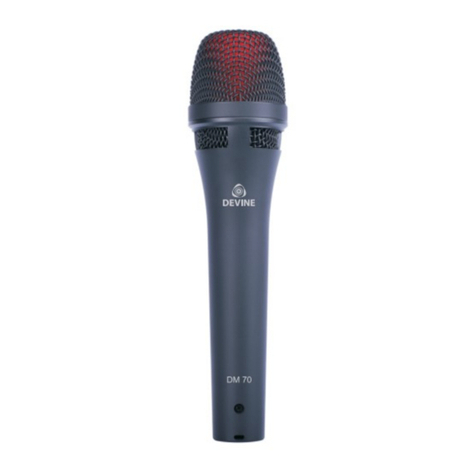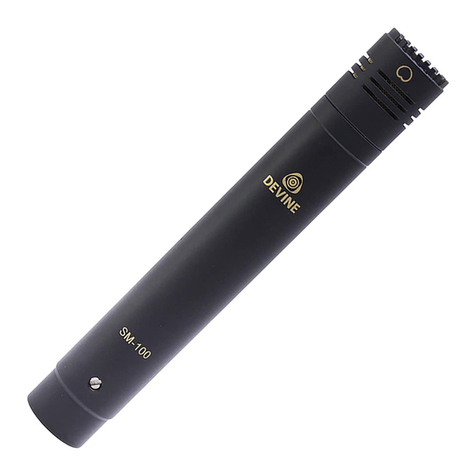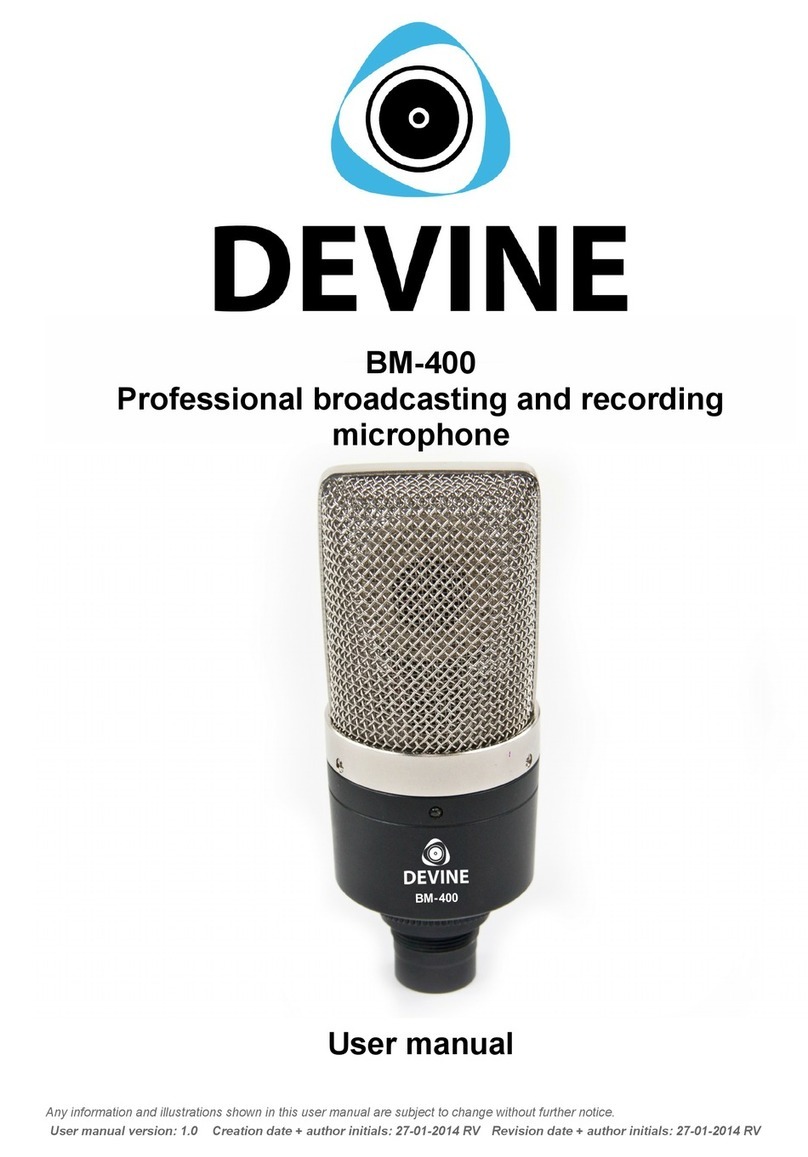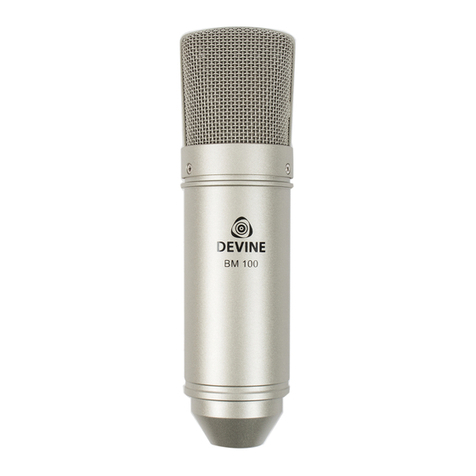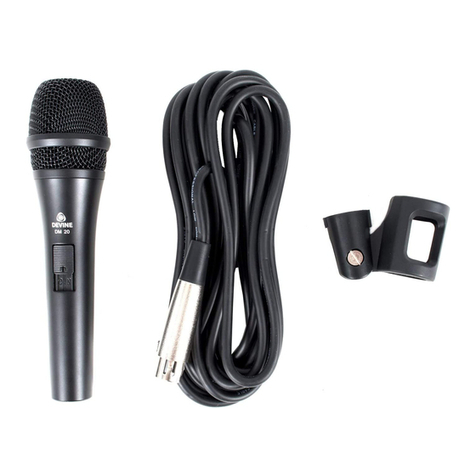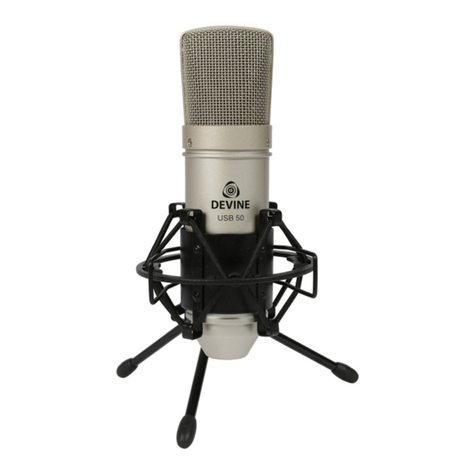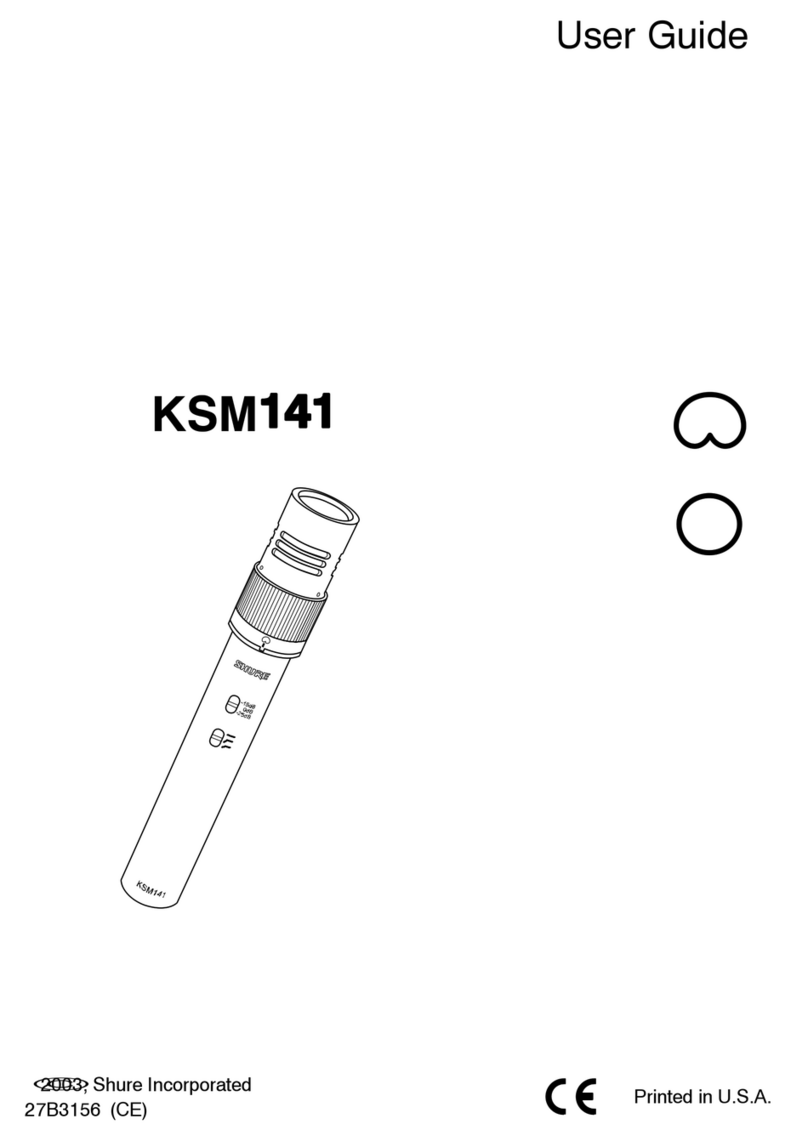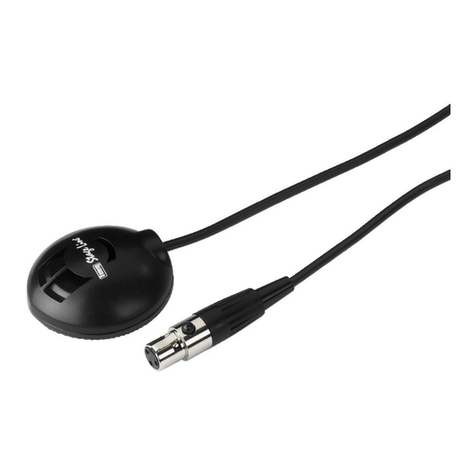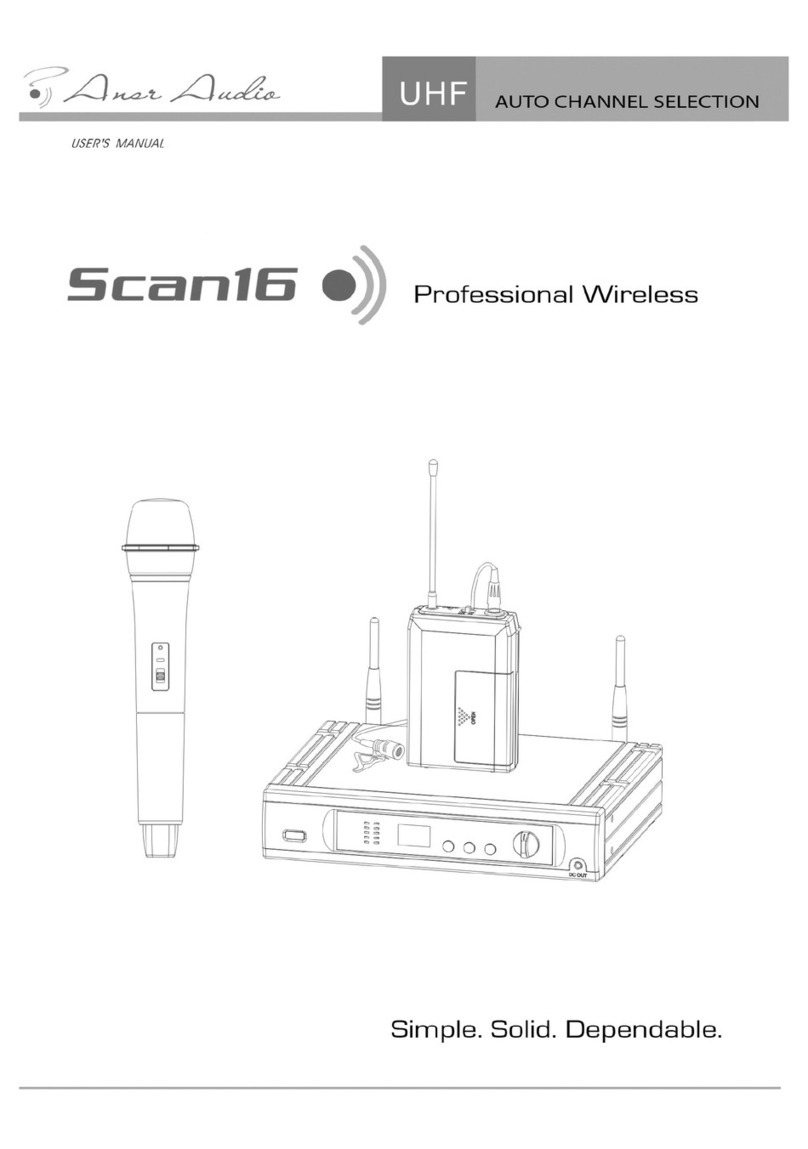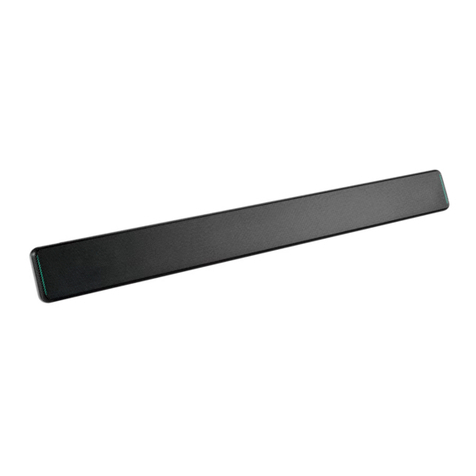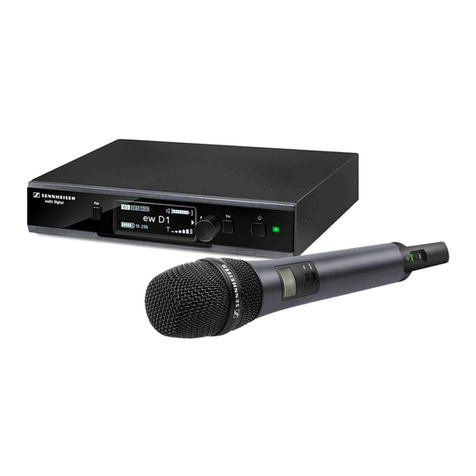Use of the microphone
The Devine BM-600 studio microphone is suitable for most recording applications in your studio. Thanks to
multiple selectable polar patterns, there is a suitable pattern for almost every application.
The Devine BM-600 has three user selectable polar patterns:
Unidirectional (cardioid):
The most used polar pattern for most vocal and instrument recording applications. The most sound is
recorded at the front of the microphone, hile reducing pickup of sound at the sides and the rear. This is the
best choice hen you use (studio)monitors directly behind the microphone and prevents feedback.
Bidirectional (figure eight):
This polar pattern carries the ‘figure eight’ name because of the shape of the polar pattern. This pattern
causes the microphone to record the most sound directly at the front and the rear of the microphone, ith
hardly any sound from the sides.
mnidirectional:
This pattern is mostly used hen you ant to record sound in a 360 degrees setting. This pattern captures
almost every sound in its direct environment, hich exterminates the need of aiming the microphone in the
right position. A negative consequence of this pattern could be that it is difficult to keep the microphone a ay
from audio sources that may cause feedback, such as (studio) monitors.
To select the right polar pattern for your application, experiment ith several settings to see hich pattern
gives the best results.
IMP RTANT: Phantom power
This large-diaphragm studio condenser microphone requires +48V phantom po er from a PA-mixer, studio-
mixer, audio-interface or phantom po er supply. Consult the manual of your equipment or contact your local
dealer hen in doubt if your equipment is capable of providing a +48V voltage.
This microphone ill not ork properly hen there is no proper +48V voltage activated. Al ays check this if
you suspect that your microphone might be damaged or broken.
Protect your microphone:
This Devine microphone is equipped ith very sensitive electronics to provide optimal audio performance.
Make sure the microphone is not exposed to severe shocks, collision, drops from high altitude or any
situations that may cause permanent damage. Improper use of the microphone is not covered by arranty.
Al ays transport the microphone in the original package, or in a flightcase ith proper foam inlay. The
microphone is not intended for on-the-road use.
Positioning and using the included accessories:
The BM-600 includes a shock mount and indscreen for optimal audio performance. Devine recommends to
al ays use the included shock mount, to prevent audio distortion and background or handling noise. The
included indscreen is optional and is mostly used hen recording outdoor.
Connect your microphone to a mixer or audio interface:
This microphone uses a 3-pin XLR connector for connection ith your mixer or audio-interface (cable not
included). It is recommended to check the settings on your audio equipment before connecting the
microphone. Check your equipment for the follo ing settings:
Mixer/Audio interface:
- Gain set to the 0-point (in the most final counter-clock ise position)
- Compression/lo cut settings positioned in the off or most neutral position
- EQ settings on the most neutral position
Any information and illustrations shown in this user manual are subject to change without further notice.
User manual version: 1.0 Creation date + author initials: 27-03-2014 RV Revision date + author initials: 27-03-2014 RV

